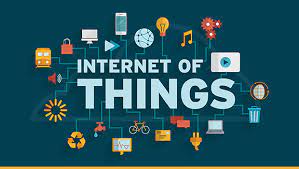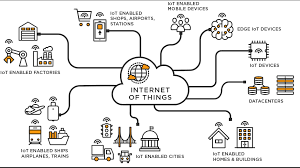
What is internet of things (IoT)?
The internet of things, or IoT, is a system of interrelated computing devices, mechanical and digital machines, objects, animals or people that are provided with unique identifiers (UIDs) and the ability to transfer data over a network without requiring human-to-human or human-to-computer interaction.
How does IoT work?
An IoT ecosystem consists of web-enabled smart devices that use embedded systems, such as processors, sensors and communication hardware, to collect, send and act on data they acquire from their environments. IoT devices share the sensor data they collect by connecting to an IoT gateway or other edge device where data is either sent to the cloud to be analyzed or analyzed locally. IoT can also make use of artificial intelligence (AI) and machine learning to aid in making data collecting processes easier and more dynamic.
Examples of IoT applications
Healthcare
In the healthcare industry, IoT devices can be used to monitor patients remotely and collect real-time data on their vital signs, such as heart rate, blood pressure and oxygen saturation. This sensor data can be analyzed to detect patterns and identify potential health issues before they become more serious. IoT devices can also be used to track medical equipment, manage inventory and monitor medication compliance.

Manufacturing
Industrial IoT devices can be used in manufacturing to monitor machine performance, detect equipment failures and optimize production processes. For example, sensors can be used to monitor the temperature and humidity in an manufacturing facility, ensuring that conditions are optimal for the production of sensitive products. IoT devices can also be used to track inventory, manage supply chains and monitor the quality of finished products. Industrial IoT is such an expansive new technology space, that it is sometimes referred to by its own abbreviation: IIOT (Industrial IoT).

Retail
In the retail industry, IoT devices can be used to track customer behavior, monitor inventory levels and optimize store layouts. For example, sensors can be used to track foot traffic in a store and analyze customer behavior, allowing retailers to optimize product placement and improve the customer experience. IoT devices can also be used to monitor supply chains, track shipments and manage inventory levels.
Agriculture
IoT devices can be used in agriculture to monitor soil conditions, weather patterns and crop growth. For example, sensors can be used to measure the moisture content of soil, ensuring that crops are irrigated at the optimal time. IoT devices can also be used to monitor livestock health, track equipment and manage supply chains. Low-power or solar-powered devices can often be used with minimal oversight in remote locations.
Transportation
In the transportation industry, IoT devices can be used to monitor vehicle performance, optimize routes and track shipments. For example, sensors can be used to monitor the fuel efficiency of connected cars, reducing fuel costs and improving sustainability. IoT devices can also be used to monitor the condition of cargo, ensuring that it arrives at its destination in optimal condition.

